How To Add Tweet To Blog Post
So you've been busy working on a blog post and you're finally ready to hit the publish button. Fantastic!
One problem: just because you publish a post, doesn't mean anyone will know about it or read it.
You need to make sure you share your work with people who want to read it or might be interested in discovering your writing.
There are two great ways to do this. The first is by having an email list. Not long ago, we wrote about how to set up an automatic RSS or manual email newsletter for your blog.
Along with using email, we recommend you share your blog posts on social media.
There are many places you can do this. Twitter, Facebook, Instagram, or LinkedIn are popular platforms and no doubt you have your favorites.
This post zooms in on how to share your blog posts on Twitter which remains to be a popular platform for educators worldwide.
Once upon a time, you could create a tweet by simply copying and pasting the link to your blog post. This is still the go-to approach for some, but is it the best strategy to make your tweet stand out?
Does this example make you excited to click through to the post?
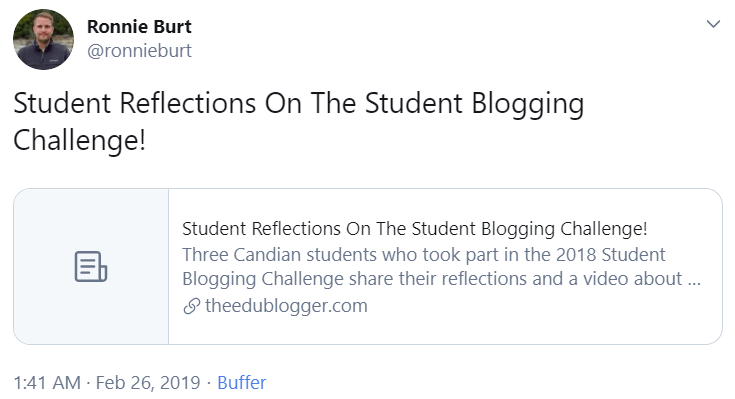
We're here to help you power up your tweets and invite a whole new community of readers to your blog or website.
If you're using a different social media platform, some of these tips will certainly still apply. Just modify them to suit the platform.
Before we dive into the eight tips, let's start with the basics of sharing a link…
Get Your Link Right
While there are much better approaches than simply copying and pasting the link to your latest blog post, the link is still going to be the most important part of your tweet.
You need to get it right!
Tip One: Share the link to the actual blog post. Not the blog itself
For example, https://www.theedublogger.com is this link or URL of this blog.
https://www.theedublogger.com/tweet-tips is the link to this blog post.
If you send readers to your blog and not a specific post, they won't know what they're supposed to be reading. They'll have to click around to find the post they want to read… or leave!
The best way to get the link to your blog post correct is to open it up in your browser and copy/paste it.
Keyboard shortcuts make this easy! For example, if you're using Windows:
- Place your cursor in your address bar. It should highlight automatically or press Control A (select all)
- Control C is the shortcut for copy
- Control V is the shortcut for paste
Tip Two: Shorten your permalink
Did you know you can edit the permalink or URL of your post before you publish it?
This can make your URL neater and easier to share. And it uses up fewer characters if you're sharing on Twitter.
This graphic we shared with students during the Student Blogging Challenge explains:
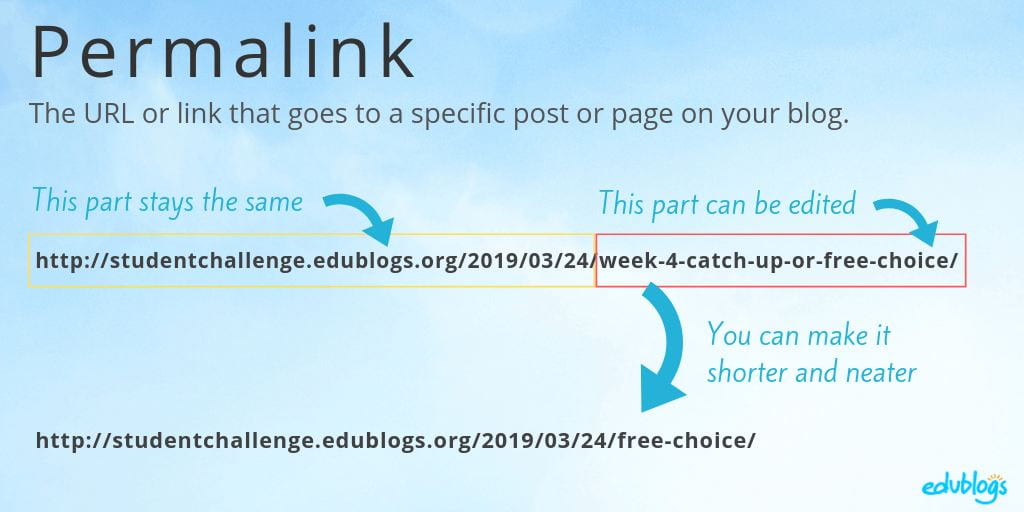
You edit your permalink before you publish a post. Don't edit the permalink after you've published a post, otherwise, the original permalink that you might have shared will be invalid.
This quick video explains how to edit your permalink if you're using Edublogs or CampusPress.
Bonus Tip: Teach students these tips about links
The tips above can also be very handy to share with student bloggers.
Using the wrong link is a common issue participants of our Student Blogging Challenge face when wanting to share a blog post. They tend to share a link to their blog, dashboard, or even a preview post when they're starting out.
We made this graphic to help Student Blogging Challenge participants understand how to find and share the link to their specific blog post.
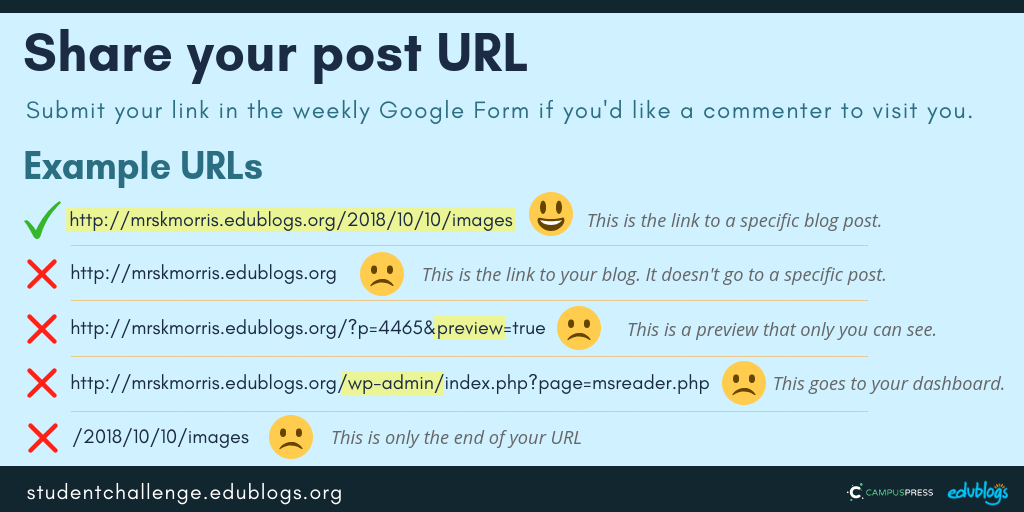
This video demonstrates to students how to find and copy their blog post URL.
8 Tips For Better Tweets
So you know one thing you want to include in your tweet — the link to the post — but what else will you write to use up your 280 characters?
And should you use all 280 characters? Not always. Good communicators know not to use redundant words, repeat themselves, or generally write in a "wordy" way.
Here are eight tips to consider the next time you share your latest blog post on Twitter. We'd love to hear your own ideas or suggestions in a comment!
1) Break Down Your Blog Post
Just because you write a blog post, doesn't mean anyone will see it. And just because you tweet out your blog post, doesn't mean others will see it either. You'll probably need to tweet multiple times.
In 2018, Twitter cracked down on tweeting duplicate content. That means you can't repeat the same tweet over and over. But why would you want to? That probably wouldn't provide value to your professional learning network (PLN).
Consider repurposing the content from your blog post into bite-sized content for your followers.
What might this look like?
- Choose some quotes from your blog post to share in the tweet. Or, better yet, turn quotes into images using a tool like Canva.
- Tweet any other images you have in your post separately. Especially if you've created charts, diagrams, infographics or anything educational, inspiring, or entertaining.
- Break down the main tips from the post into separate tweets. For example, we could do a separate tweet about each of the eight tips in this blog post.
- Create a short video about your blog post. A great tool to do this "automagically" is Lumen5.
- If you're game, you could tweet a short video of yourself talking about your blog post. That would create a lot of interest.
Here's a video from Monica Burns where she talks about an upcoming blog post before she has published it. That's a fun way to build excitement on Twitter too!
— Monica Burns, Ed.D. (@ClassTechTips) January 4, 2020
2) Build Interest
Many people now like consuming content on the social media platform itself, without clicking away down a rabbit hole of content.
However, you do want to entice people to actually get off Twitter and go to your blog.
To do this, try to build interest and intrigue; give your followers a reason to click and read your blog post.
This obviously doesn't mean clickbait; you don't want to over promise and under deliver.
Building interest might look like:
- Addressing common concerns
- Hinting at the conclusion or advice your post offers
- Explaining why you wrote a post
Here is an example from Jake Miller . Not only is his tweet very useful and eyecatching (the GIF is an example of our first tip above), but he addresses concerns that educators might have ("Whoa. Too complicated…").
No doubt the tweet would spark interest and encourage readers to click through to his post.
This #EduGIF may make you say "Whoa. Too complicated. Too time consuming." but students could whip 1 of these up in a few minutes, then 🎙 it over to show content in a way that is much more *sticky* than traditional activities. #GoogleEI #GoogleDrive https://t.co/S8xErbA6Cr pic.twitter.com/6fk2mIhwdg
— Jake Miller (@JakeMillerTech) January 4, 2020
In this example, Chris Young explains why he wrote his blog post. No doubt, his followers' interest would be piqued at the emotive tweet.
This was what my 6 year old daughter asked Santa for Christmas. The fact that #STEAM is advertised on the same canvas as the amount of likes a girl (6 years and up) receives infuriates me. It's 2020, right?!? I wrote a blog post to get my feelings out. https://t.co/7km7Z7veRb pic.twitter.com/0ALsfbrNuz
— Chris Young (@ChrisYoungEDU) January 2, 2020
3) Create A Custom Image
Want your tweet to catch your followers' eyes? An effective image will help!
Whenever we write a blog post on The Edublogger, we create a custom image. Canva is a great place to do this as is Google Drawings (we have guides to Canva and Google Drawings that will help you get started).
Here is an example:
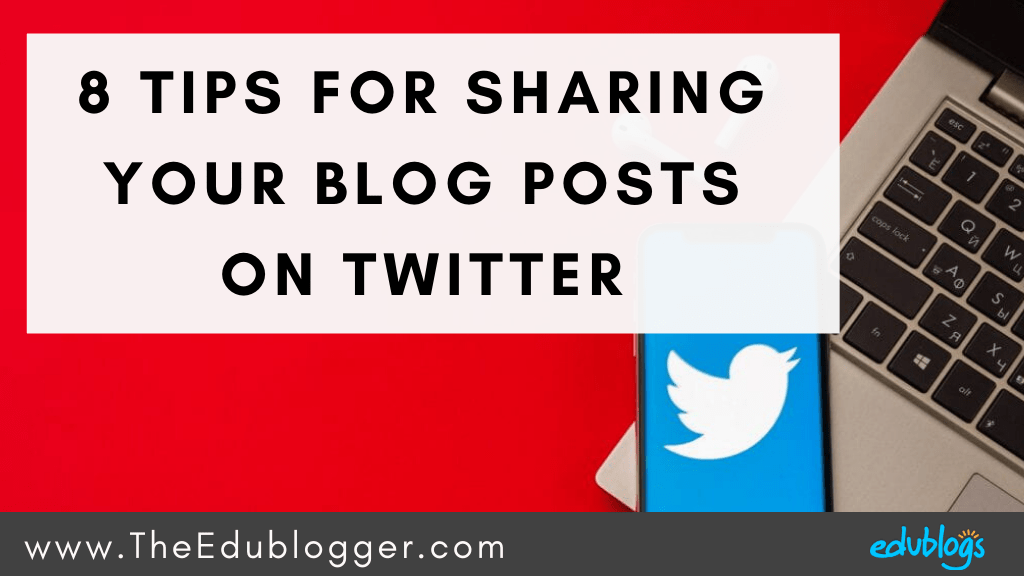
You might not want to put this exact image in every tweet about your blog post. As we mentioned in tip one, it's also a good idea to share any other images from your blog posts in separate tweets.
Silvia Tolisano is excellent at creating graphics to accompany her tweets. Sometimes they just describe her blog posts, sometimes they're quotes, sketchnotes, or tease the post in a different way.
12 Ideas for Amplified Forms of Digital Storytelling https://t.co/TZWUGaQwum #storytelling #digitalstorytelling #amplified #ampeduca #amplifyEDU pic.twitter.com/Z0XyutR9A0
— Silvia Tolisano (@langwitches) December 2, 2019
4) Try Emojis And White Space
You want your tweets to stand out in a busy stream and two effective strategies to try are emojis and white space.
The white space part should be obvious: hit your Enter key and break up your text. It may just make the tweet easier to read and more impactful.
The role emojis play in writing has evolved over recent years. They've gone from being a bit of fun to add expression to really changing the way we communicate.
Using emojis as bullet points is a particularly effective strategy.
Tony Vincent is masterful at this approach. Yes, it takes a couple of minutes to select the most appropriate emojis but it will definitely make your tweet stand out!
— Tony Vincent (@tonyvincent) January 3, 20206️⃣ Thinking scaffolds for deeper understanding from @MindShiftKQED
📋 Prompt to include context
🤔 Ask open-ended questions
🔀 Help transfer knowledge and experience
🤗 Leave room for ownership
🎲 Invite and manage risk
💭 Encourage reflection
https://t.co/PYwVa580dE
5) Use Hashtags … But Don't Overdo It
Hashtags are an important part of Twitter. They help to categorize tweets and make it easier for people to find tweets they're interested in.
There are a lot of opinions out there about using hashtags in your tweets. While they are a good idea, we believe you want to use them sparingly.
Even Twitter itself concurs:
Although it may be tempting to fill your Tweet with trending hashtags, studies show that less actually is more. Internal Twitter research shows that Tweets with 1-2 hashtags gain 100% more engagement — so try to limit your usage.
Want to learn more about hashtags? Check out our top ten hashtag tips from our Ultimate Guide to Twitter.
6) Tag Others Wisely
It's a great idea to tag other people in your blog posts. They might be able to share your work with their own PLN. Or they might simply read and enjoy your work which will strengthen your connection.
However, you want to tag wisely.
Don't just tag any individuals in your field simply because they have a large following or are well-known.
Tag individuals who you mention in your blog post. Perhaps you've linked to their resources or built on their ideas. Or maybe you'd like to ask their opinion of your post. If so, ask them.
If you have the characters, it can be a good idea to make it clear why you're tagging someone in your tweet.
Here is an example:
— edublogs (@edublogs) January 2, 2020
Some bloggers who are active on Twitter have a reciprocal relationship with other bloggers — even if it's informal. You might have some members of your PLN whose work you share out to your network regularly and you know they will do the same. This approach can be effective.
7) Replicate What Works
Everyone has their own unique community on Twitter. Over time you should start to notice what sort of tweets get the most engagement.
Take a few moments every now and then to think about this. You can even analyze your tweets through your activity dashboard.
Perhaps your tweets where you use images or emojis are better received? Or maybe there is a certain time of day where your tweets receive more engagement?
Basically, you want to figure out what is working and keep doing that!
Also, don't forget to tweet about your popular blog posts more than once but mix it up with different text and images.
8) Be Part Of Your Community
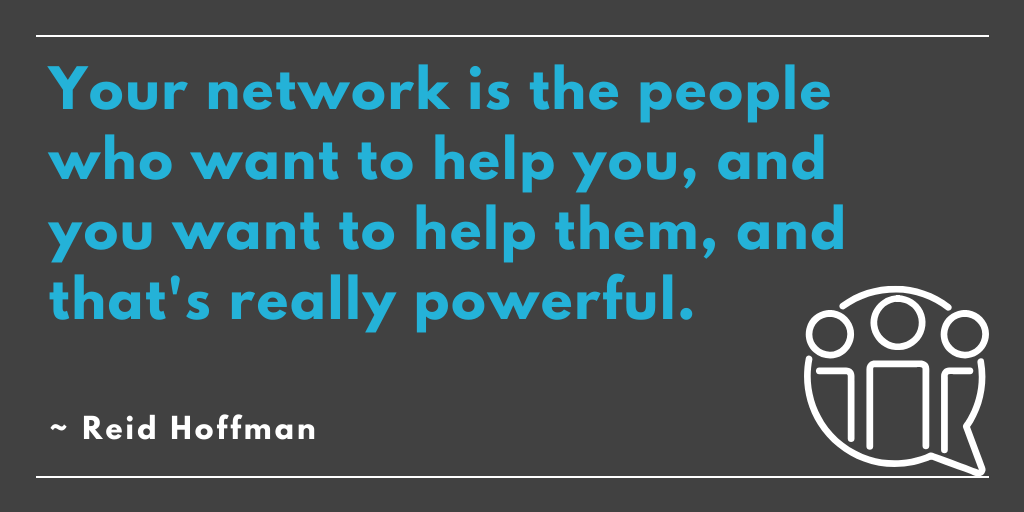 Give and take is the key to success in all relationships whether online or offline.
Give and take is the key to success in all relationships whether online or offline.
It's certainly a mistake to only promote your own work on Twitter. Invest in your PLN and share some of the great things that others are doing. Retweet their tweets and add your thoughts and encouragement.
Joy Kirr is great at supporting her community on Twitter. Here is an example retweet from Joy:
Yikes and Wowsers!
— Joy Kirr (@JoyKirr) January 1, 2020
Got some time on your hands?
Want to learn something new?@jmattmiller has the past #DitchSummit videos all in one place!#edtech #edchat #tlap https://t.co/4alZDtYAPa
Not sure what a PLN is all about? We've got a free self-paced course to help you learn more. Check it out here.
Conclusion
Twitter is a great place to promote your blog posts. With a few easy tweaks you might be able to make your tweets much more effective!
Let's recap the eight tips:
- Break down your blog post (create bite-sized content from quotes, tips, images etc.).
- Build interest (give your followers a reason to click and read your blog post).
- Create a custom image to catch your followers' eyes.
- Try emojis (perhaps as bullet points) and white space to make your tweets stand out.
- Use hashtags in your tweets but don't overdo it. One or two is plenty.
- Tag others wisely especially if you mentioned them in your blog post.
- Replicate what works and make the most of the provided analytics.
- Be part of your community — give and take is the key to success.
If you want to learn more about Twitter, be sure to check out our Ultimate Guide. It's useful for beginner to intermediate users.
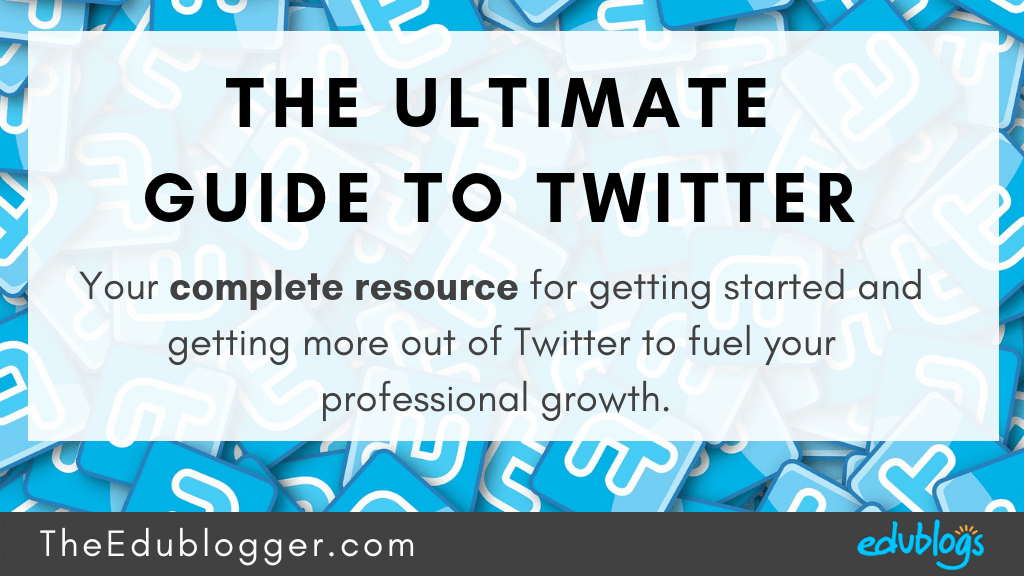
Thoughts? Questions?
How do you share your blog posts on Twitter? What can you teach your students about sharing their work with a network online?
Leave a comment below and we'll get back to you.
Learn More
These useful posts were mentioned in this article:
The Ultimate Guide To Twitter
Set Up An Email Newsletter To Share Your Blog Posts Using Mailchimp
Share Your Blog Posts With Automated Mailchimp Emails (RSS)
A Guide To Google Drawings For Teachers, Students, And Bloggers
Canva In The Classroom: Getting Started, Example Designs, And Tips!
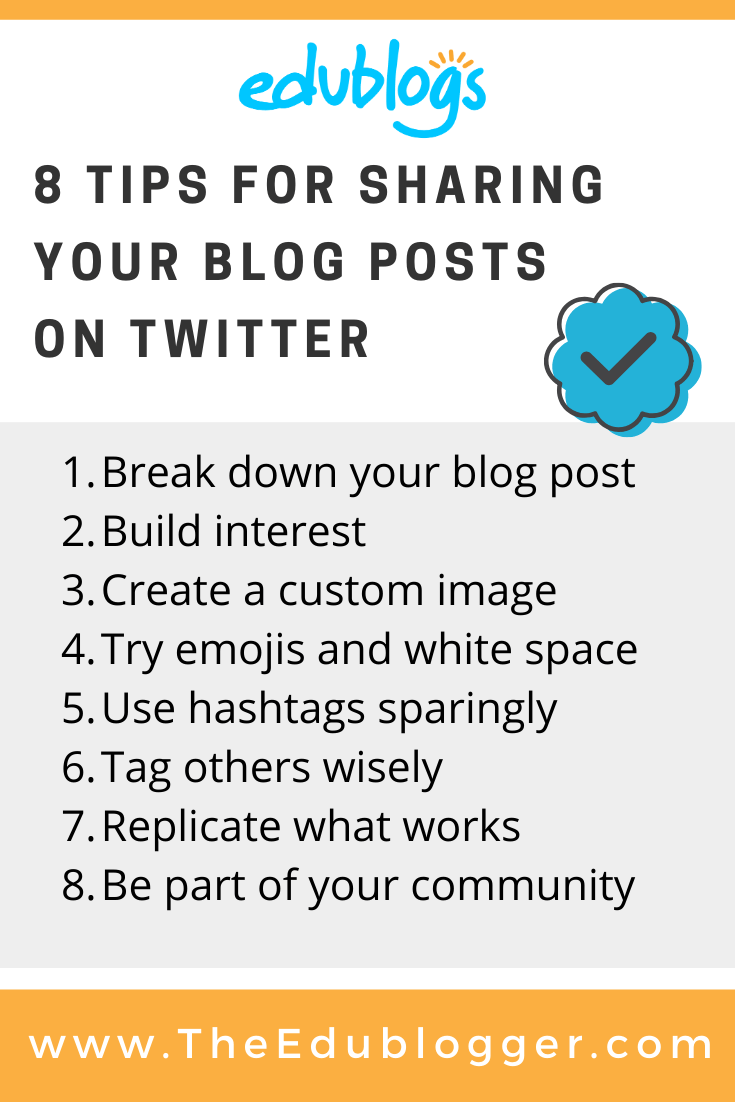
How To Add Tweet To Blog Post
Source: https://www.theedublogger.com/tweet-tips/
Posted by: moorenetaid.blogspot.com

0 Response to "How To Add Tweet To Blog Post"
Post a Comment